[Updated on 1 June 2020] Hammocks symbolize everything that makes a summer-perfect, feeling like you’re floating while a cool breeze bends around your entire body. Add a stiff drink into the mix, and you are ready for the best nap of your life. A hammock may look like a net tied between two trees, but it is so much more than that. There are many features that differentiate one hammock from the next. Some are minimal, and others are deluxe, some are traditional, and others are freestanding, the materials, style, and weight limit all change with every brand. Choosing the perfect hammock for your situation can get confusing. Don’t worry, this buyer’s guide lays it all out for you so you can buy with confidence.
A Brief History
To truly appreciate hammocks, it helps to know their origins. Hammocks date back centuries, so this will be an abbreviated history. Anthropologists believe that hammocks dated back at least 1,000 years and originated in South America. The working theory is that early South Americans devised these beds as a way to sleep off the ground away from snakes, bugs, and other dangerous pests.
Columbus was the first person to bring the hammock to Europe, where it was adopted by militaries and prisons as a space-saving sleep option. Hammocks in the U.S. have almost always been used for leisure with the first mass producer of hammocks in the U.S. coming in the late 1800s. One notable use of these floating beds was during the construction of the Panama canal; an army physician recognized that they could easily be wrapped in mosquito netting, which prevented workers from contraction mosquito-borne illnesses while working on the canal.
Common Hammock Terms
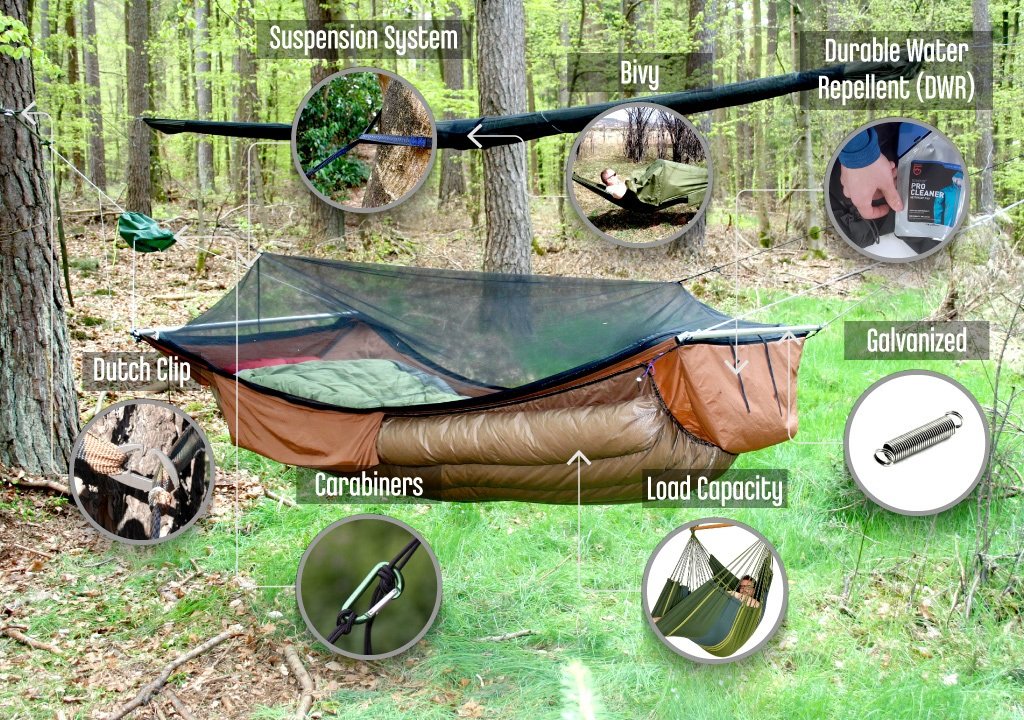
The hammock community has a ton of terms that they use when talking about hammocks and the people who enjoy using them. These are not all the terms that the hammock community uses; they are only the ones that will help you in the buying process.
Bivy
Also called a hammock sock or travel pod, these shells go around the hammock to provide water or wind resistance.
Bug Net
Mesh netting that wraps around your hammock to keep pests out.
Durable Water Repellent
DWR is a fabric treatment that makes your hammock more water-resistant.
Carabiners
Heavy-duty clips that connect the hammock to the suspensions system.
Dutch Clips
A lightweight alternative to carabiners that connect the hammock to the suspension unit.
Suspension System
Any part of the hammock that is responsible for keeping it off the ground from the clips to the posts.
Galvanized
This term refers to metal that has been treated to resist the elements.
Load Capacity
This refers to the maximum weight that a hammock can hold.
Reasons to Own a Hammock
Rest and relaxation are reason enough to own a hammock, but there are plenty of reasons to buy one of these swaying beds.
Perfect for Adventurers
There are plenty of reasons why hammocks are better than tents for outdoor enthusiasts. If you are backpacking long distances, a hammock is much lighter, and when it comes time to set up camp, a hammock is faster to set up than a tent. A tent has walls, but a hammock keeps you off the ground, so in the long run, it probably keeps you cleaner and safer than sleeping in a tent. Hammocks can also be turned into tents with a few added accessories, while a tent can never be a hammock.
Stress Relief
The anecdotal evidence of a hammock’s effect on stress is never-ending, but a recent Swiss study quantified it. People who slept in hammocks slept deeper and longer than those in traditional beds thanks to the rocking motion. More sleep is better for mental and physical health and will allow you to think clearer and get more done during the day.
Cheap Alternative
Hammocks are an inexpensive alternative to a regular bed. If you are just starting out in a new house and looking to save money, a hammock is a great alternative to a traditional bed that is both inexpensive and has health benefits.
Good for Health
The deep sleep that a hammock provides is great for your mental health, but hammocks are also great for physical health. Many experts believe that the best way to sleep is on your back and a hammock all but forces you sleep in that position. More importantly, sleeping in a hammock reduces pressure on your spine, which has several health benefits.
Awesome for Pets
One of the coolest reasons to own a hammock is because pets love them. Indoors or outside, your dogs and cats won’t be able to resist hopping on a hammock for naptime.
Hammock Styles
Before we can get down to the details, you must first decide on what style of hammock you want. It may surprise you to find out how many different styles of hammock there are.
American
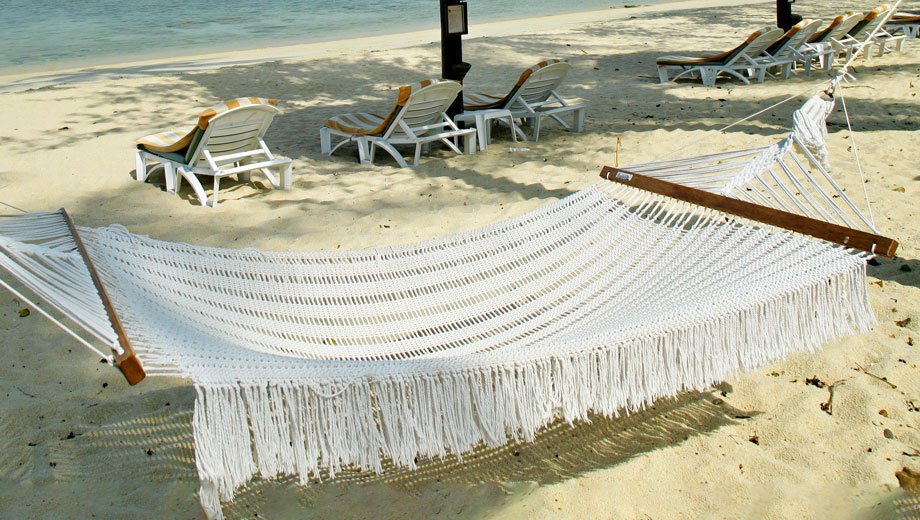
American style hammocks use spreader bars to support and expand the hammock. These are great hammocks for sunning because they stay flattered; they are also great for indoors since they are self-contained. This style usually fits one or two people comfortably, but the downside with the design is that it tips much easier. Two people can easily upset the balance, and you will find both of you underneath the hammock.
Brazilian
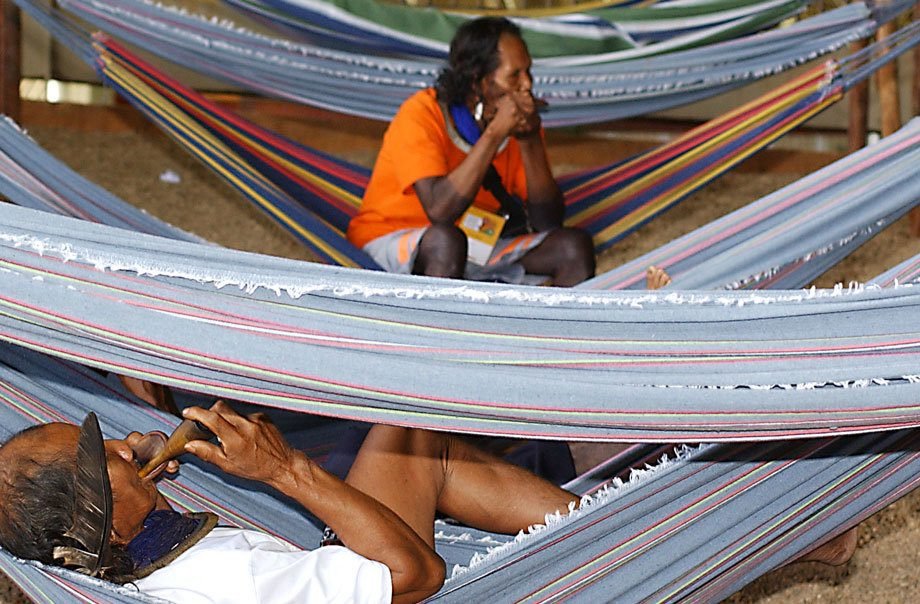
These hammocks are usually made with cotton or polyester rope and are probably what most people think of when they think of- a traditional hammock. These hammocks are awesome for an afternoon nap because you sink into the hammock, and it wraps around you. These hammocks fit one or two people, but if you have two people in a Brazilian hammock, they should be pretty comfortable with each other.
Mayan
Mayan hammocks are usually handwoven and the most luxurious hammocks. Much like Brazilian hammocks, the Mayan hammock doesn’t rely on spreader bars and will wrap you up as you sink into it. These hammocks range in size and can fit a group of people at the larger end, though you should probably be pretty close to them.
Rope Style
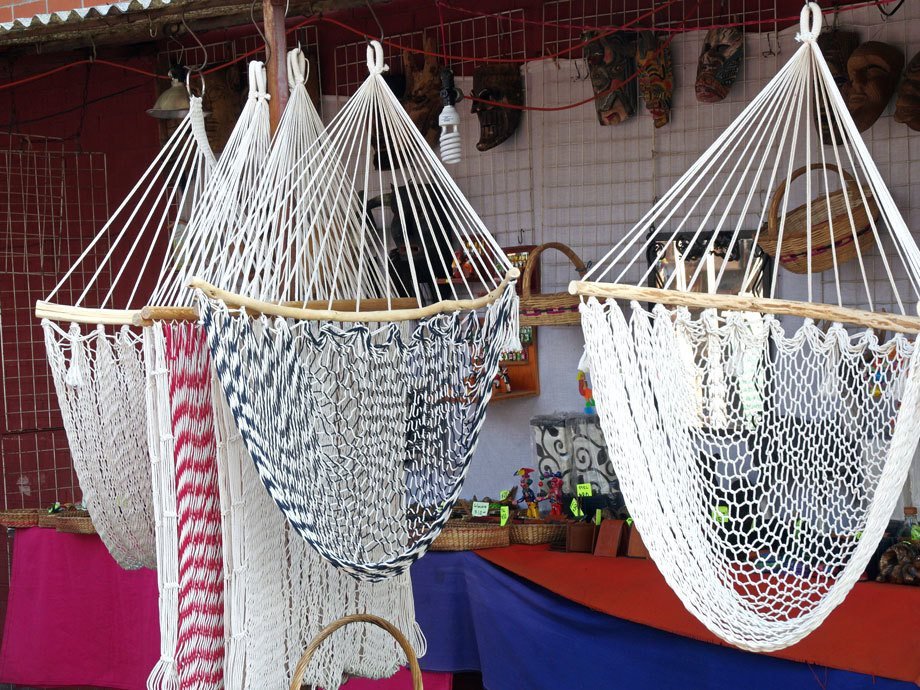
These are simple hammocks, but they work for most people. They are usually made from durable polyester or cotton rope.
Quilted Style
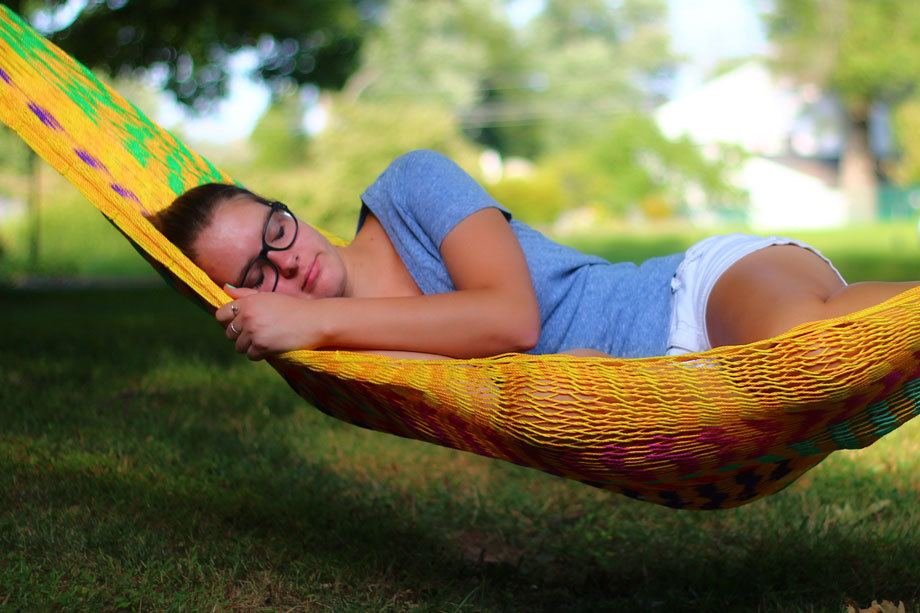
A quilted hammock is similar to a rope hammock but arguably more comfortable. They traditionally use a polyfill material that is stitched between two layers of fabric. Unlike the rope style, these hammocks have a more solid base. These hammocks are usually reversible, so depending on the manufacturer, you may get two designs in one hammock to better match your other outdoor décor.
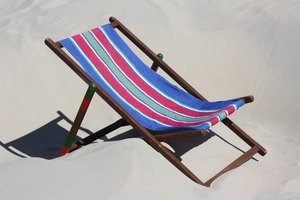
Folding Hammock
These contraptions are in a class all their own. The best way to describe one of these is like a hammock and a cot combined. They are sturdy and comfortable for the most part, but they have their downsides. Folding hammocks are light but cumbersome, so they are great for a campout, but not so much for a backpacking trek. They are a self-contained unit and don’t need any extra set up other than unfolding them.
Hammock Materials
Cotton
Cotton is a popular material for hammocks because it is soft and more natural than other materials. Cotton is sturdy but tends to become discolored in the sun. If that is something that will bother you, storing the hammock inside when not in use will extend its longevity.
Hemp
Hemp is a popular material because it is all-natural and highly renewable, which makes it better for the environment and cheaper to manufacture. The durability of hemp is another positive feature that makes it a desirable material for hammock rope.
Polyester
Polyester is softer than it used to be, but it still doesn’t match the comfort of cotton. What polyester has going for it is that it stands up against the elements much better both structurally and keeping its color. Experts still suggest that you store a polyester hammock somewhere dry when you’re not using it.
Nylon
Also known as parachute material, some people love Nylon material for their hammocks. Nylon has many benefits like being water-resistant, durable, and lightweight, which makes it the perfect hammock to bring on hiking expeditions. These hammocks also come in every color imaginable to match your décor and personality. The only probably with nylon is that it is not as firm, so it is not as supportive as other materials.
Hammock Size

The size of the hammock is important in determining how many people can fit comfortably on the bed. It is also an indicator of how much weight a hammock can hold.
Dimensions
Single
A single hammock is a hammock meant for one person. They usually measure between 39 to 50 inches wide and 76 to 79 inches long. These hammocks are suitable for a single person, but larger-bodied individuals may not find a single to be very comfortable.
Double
A double is not double the size of a single, but it is large enough to fit two people. They usually measure between 52 to 60 inches wide and 74 to 79 inches long. These hammocks are usually a little stronger than singles to account for the added weight of a second person.
Queen
Queen size hammocks fit at least two people comfortably and are perfect for sinking into for a long nap. They usually measure close to 69 inches wide and 79 inches long.
King
Just like a king-sized bed, the King hammock is big enough for the whole family. These hammocks measure around 79 inches wide by 79 inches long and can fit three adults comfortably.
Weight Capacity
There are a lot of factors that go into how much weight a hammock can hold. The size, the type of material, and construction all play a part in the number of pounds a hammock supports. Most hammocks will support between 150 and 500 pounds; it is important to note that this is static weight, and you should never jump onto a hammock.
Hammock Suspension
A hammock isn’t worth anything if it can’t be suspended. It used to be that you would just tie both ends to two trees, and while that is still an option, hammock technology has advanced.
Stands
It used to be that if you didn’t have two perfectly spaced trees, you were out of luck, but now stands are readily available. They are a self-contained unit comprised of two poles connected by a base forming a shape similar to a boat in most cases. These stands come in a variety of sizes to meet the needs of different types of hammocks. When choosing a stand make sure that it can withstand your needed weight capacity and has been treated to withstand the elements.
Posts
Posts are the most rudimentary suspension method, as they are practically artificially trees. You can purchase them or make your own, but no matter what you do, you want to make sure that the material can withstand the elements. These posts need to be cemented into the ground for safety, so it’s important to weigh the permanence of this method.
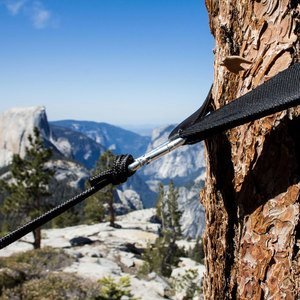 Tree Straps
Tree Straps
If you have the perfect trees in your yard, there are still items that make hanging your hammock easier. Tree straps are designed to quickly wrap around a tree and attach to your hammock for fast installation. They also make for a quick breakdown if you are traveling with your hammock.
Springs and Chains
These are two different devices, but they serve the same purpose, so it comes down to personal preference. Both springs and chains are made to connect the hammock to the suspension mechanism. Chains also serve the purpose of adding length to shorted hammocks when needed to connect to the suspension mechanism.
What is a Spreader Bar, and Do I Need It?
Spreader bars are wood or metal bars on both ends of the hammock that are meant to hold the hammock open and keep it flatter instead of cocooning the user. They are not necessary to make a hammock work, but a lot of people prefer them for both looks and convenience. The one downside to spreader bars is that they make the hammock tip easier.
How to Care for Your Hammock
Once you decide what the best hammock is for your needs, you are going to want to make sure you take care of it. These tips will help you care for your hammock and keep it looking and working better longer.
- Make sure that you place your hammock out of direct sunlight. It will ensure that the hammock doesn’t wear prematurely from sun exposure, and it also protects you from the sun’s rays if you out sleep your sunscreen.
- Follow the weight restrictions of your hammock and never jump on the hammock. At worst, you will get hurt, and at best, you will stretch out the hammock and cause structural damage to the suspension system.
- Always distribute weight as evenly as possible on the hammock to prevent stretching or strain on the suspension system.
- Don’t sit or lay on the edge of the hammock because it can stretch the fabric, but it is also a hazard as the hammock can flip.
- To clean a hammock made from cotton or hemp rope, soak the hammock in a mixture of detergent and water. Lay it out flat in the sun to dry; the hammock may shrink a little, which is normal; it will stretch back with use.
- Nylon hammocks are even easier to wash, remove all the hardware and send it through the washing machine by itself. Lay it out to air dry, or put it on a clothesline if at all possible; DO NOT dry it in the dryer.
- Polyester hammocks are washable either way, but it is recommended that machine washing is done on your machine’s gentle cycle with cold water.
- If your hammock uses spreader bars, keep them away from water to prevent them from warping.
- Refinish any wood parts of the hammock regularly with a water-resistant finish to help your hammock last longer.
- If you live in an area where you won’t be using your hammock year-round, it is suggested that you take it down and store it somewhere dry in the offseason.
Hammock Accessories
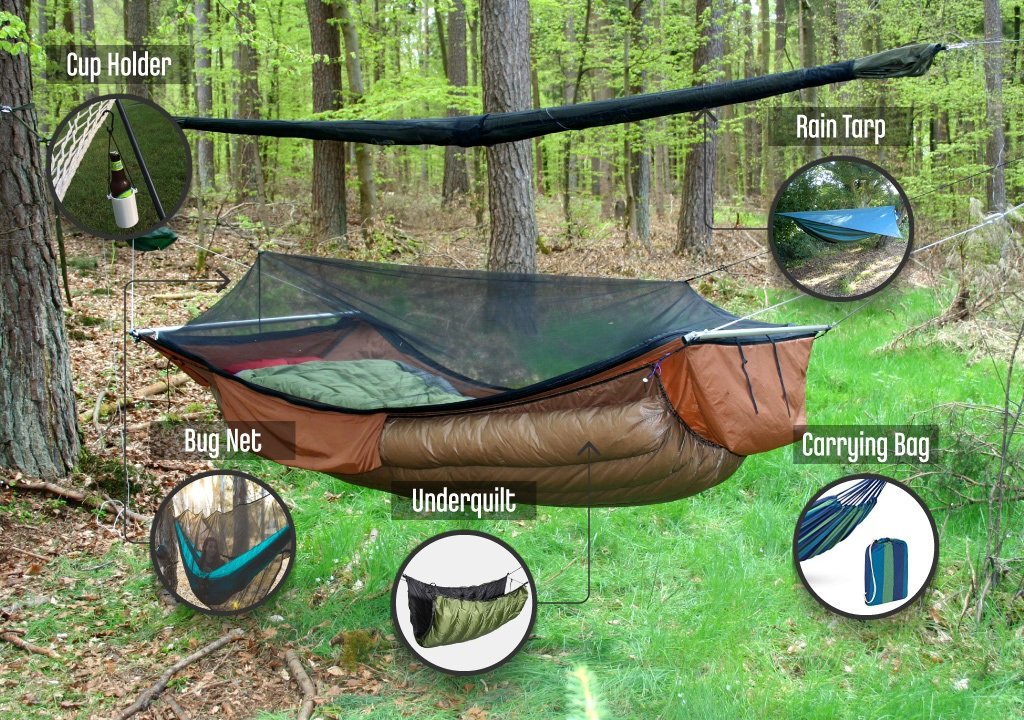
Hammocks are fun by themselves, but adding accessories to them can make them fun and functional in some cases.
Underquilt
An under quilt is a blanket you can add to your hammock to prevent your back from getting cold. It’s perfect for campers who may experience warm days but cold nights as well as areas where you can use your hammock year-round but may need a little extra warmth for a few months.
Rain Tarp
You could get any tarp and try to set it up over your hammock, but it is a lot of work, and the results may not be what you want. Instead, buy a rain tarp that is specifically designed for hammocks, even better, one that is specifically designed for your specific hammock. These tarps are made to perfectly cover your hammock and keep you dry from every angle. Rain tarps are a necessity for campers who choose to ditch the traditional tent for a hammock.
Bug Net
For comfort and safety, this is a fantastic accessory for any hammock. These nets are designed to encompass your hammock all the way around and keep nasty pests out. Again, this is a great accessory to keep you comfortable in your backyard, but it can be a literal lifesaver if you are camping outdoors in exotic regions.
Cup Holder
There are cool braided cup holders out there that are made from the same rope material as hammocks. These cup holders are made to connect to your hammock and hold a beverage level. If you are hiking, they can also double as a water bottle holder that you can hook to your belt.
Carrying Bag
If your hammock did not come with a bag, there are plenty of options out there meant to make your hammock compact. It is great for space-saving storage at home and perfect for backpacking.
Other Uses for Hammocks
As if you didn’t have enough reasons to buy a hammock, here are a few more unconventional uses for hammocks that prove they are indispensable at home and in the wild.
It’s a Net
When you think about it, a hammock is just a net that has been repurposed as a bed. When it’s not being used as a bed, a hammock is a utility that can be used as a cargo net to carry supplies or a net to catch fish if the need arises.
Make a Chair
With a little ingenuity, a hammock can make a pretty great chair. By attaching on end overhead and the other in front, the hammock will lean forward and create a back while remaining just as strong as its traditional position.
Overnight Storage
If you have an extra hammock or another place to sleep, your hammock can be used to keep other items off the ground. Hoisting gear into the trees keeps it from getting wet or dirty, and keeping food in the trees keeps the bears and raccoons out of it.
Survival
It’s not common that you would need to use your hammock for these purposes, but it doesn’t hurt to have the information in the back of your mind.
- Make a ghillie suit to hide from predators and prey
- Fashion a sail out of a nylon parachute.
- Catch rain for clean water.
- Use as a signal flag.
Buy With Confidence
Whether you are planning to enjoy a good book on a breezy Sunday afternoon or are planning a survivalist retreat, you can buy with confidence knowing what you need. Once you know what you plan on using it for, you can decide which suspension method, which material, and which size works best for you. From there you can decide if you will use it for anything else and which, if any, accessories suit you. Don’t forget that hammocks need to be cleaned and maintained, which is not a deciding factor but should have some weight in your final decision. Most of all, have fun and enjoy one of the coolest pieces of recreational equipment ever invented.

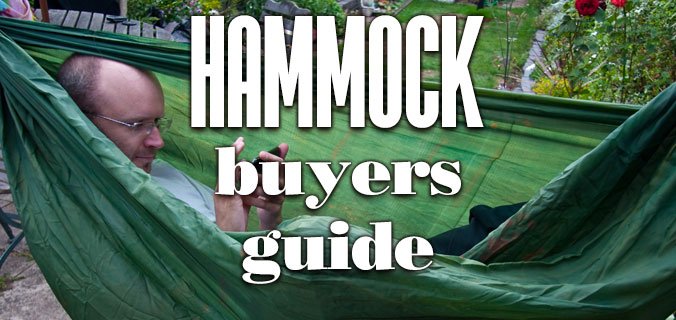


Comments are closed.